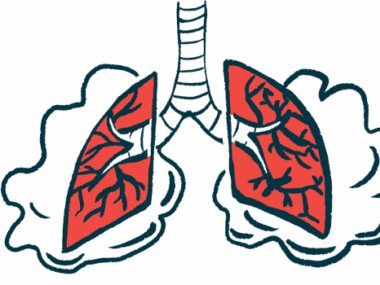Low ‘good’ cholesterol levels linked to more severe SSc-ILD
NMR spectroscopy compared fat profiles of SSC, healthy blood samples
Written by |

Low levels of high-density lipoprotein (HDL), the so-called “good” cholesterol, are linked to more severe symptoms of systemic sclerosis (SSc) with interstitial lung disease (ILD), a study finds, suggesting that profiling fats in the blood could aid in planning more personalized treatments for the disease.
The study, “Metabolomic signature identifies HDL and apolipoproteins as potential biomarker for systemic sclerosis with interstitial lung disease,” was published in Respiratory Medicine by researchers in Germany.
In SSc, also called scleroderma, overly active immune cells lead to thickened patches of hardened skin and sometimes to scarring in internal organs. When scarring builds up in the lungs, it can cause ILD, where the air sacs and the tissue around them become damaged, making it difficult to breathe.
What triggers SSc isn’t clear, but circulating fats such as cholesterol may play a role in how the disease develops. Cholesterol is carried in the bloodstream in particles called lipoproteins. One such lipoprotein, HDL, helps remove unused cholesterol from the body. It also protects small blood vessels from damage and prevents blood clots from forming.
HDL levels and disease severity
To better understand the role of lipoproteins in SSc, the researchers turned to nuclear magnetic resonance (NMR) spectroscopy, a technique that uses radio waves and a powerful magnet to provide detailed information about molecules in a solution, in this case, the different types of lipoproteins in the blood.
The researchers compared the fat profiles of blood samples from 100 patients who had a diagnosis of SSc and a mean disease duration of 117 months, or nearly 10 years, against 40 healthy people matched for age and sex.
Compared with the healthy people, SSc patients had changes in seven types of lipoproteins that indicated a dyslipidemic profile, or abnormal levels of fats in the blood. For example, patients had higher levels of triglycerides, components of natural fats and oils, which are linked to a higher risk of stroke.
Thirty-one patients had SSc-ILD and 14 had pulmonary arterial hypertension, which refers to high blood pressure in the blood vessels that supply the lungs. Patients with SSc-ILD had reduced HDL and some of its associated proteins, such as apolipoproteins A1 and A2.
In these patients, lower HDL levels were linked to worse lung function, as indicated by lower forced vital capacity, which is the amount of air that can be exhaled from the lungs after taking the deepest breath possible, and diffusion capacity of the lungs for carbon monoxide, a measure of how effectively the lungs transfer oxygen from inhaled air to the blood.
Lower HDL and apolipoproteins A1 and A2 were also related to how thick a patient’s skin was, which is measured in the clinic by the modified Rodnan Skin Score. This suggests HDL may serve as a biomarker for SSc-ILD severity.
“For the first time we identified a unique pattern of dyslipidemia in SSc-ILD patients compared to SSc patients without lung involvement,” the researchers wrote, adding that profiling fats in the blood could lead to “more individualized evaluation and therapy.”






